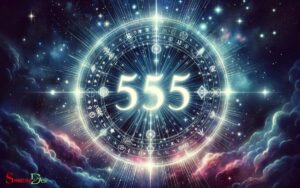What Is the Symbolic Meaning of a Rainbow? Hope!
The symbolic meaning of a rainbow encompasses hope, promise, and the connection between the earthly realm and the divine. It often signifies a new beginning or the end of a storm, and in various cultures, it is seen as a sign of peace and harmony.
Rainbows have been deeply symbolic in various cultures and religions:
- Hope and Promise: In Christianity, the rainbow is a symbol of God’s promise to Noah that he would never again flood the Earth.
- Connection with the Divine: In Norse mythology, the rainbow, called Bifröst, is a bridge between Earth and Asgard, the realm of the gods.
- Peace and Harmony: The rainbow flag is used as a symbol of LGBTQ+ pride, representing diversity and inclusivity.
- New Beginnings: Many see rainbows as a sign of a fresh start and the end of a difficult time.
Rainbows are universal symbols of optimism, often reminding us that after adversity comes a period of calm and positivity.
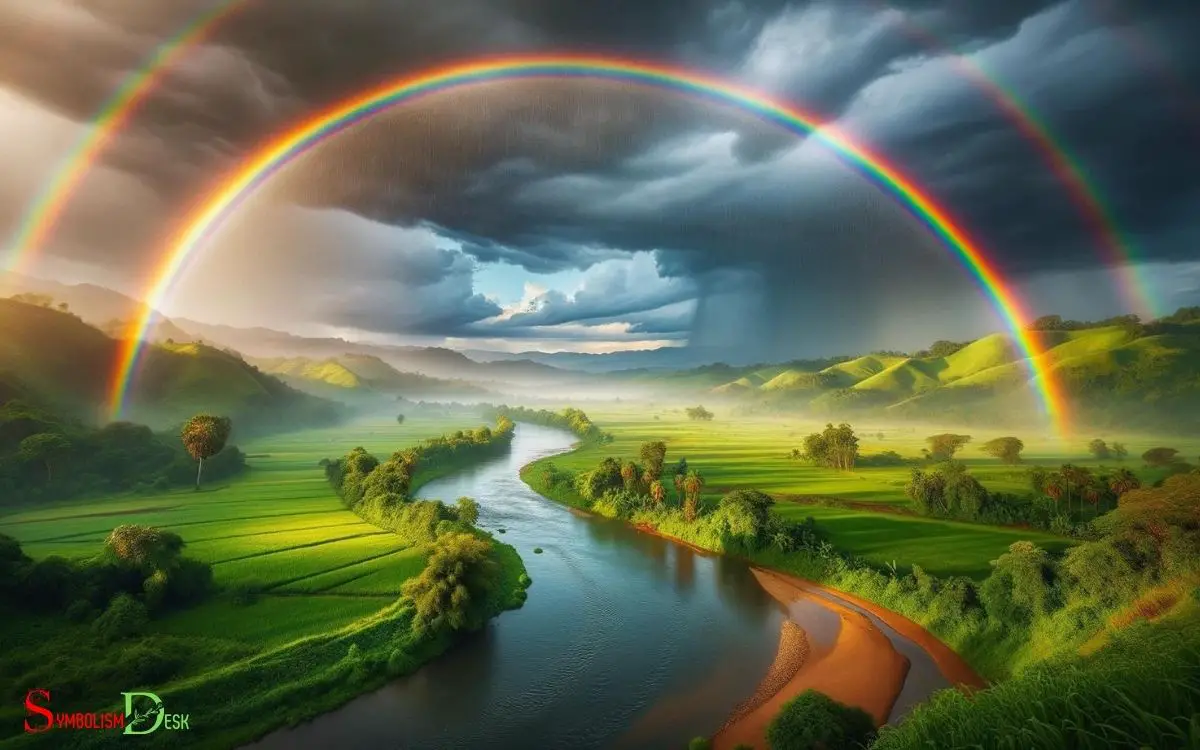
Key Takeaway
7 Colors: Symbolic Meaning of a Rainbow
| Color | Symbolic Meaning |
|---|---|
| Red | Passion and vitality |
| Orange | Creativity |
| Yellow | Joy and enlightenment |
| Green | Healing and renewal |
| Blue | Intuition and communication |
| Indigo | Spirituality and intuition |
| Violet | Transformation and divine connection |
Cultural Interpretations of Rainbows
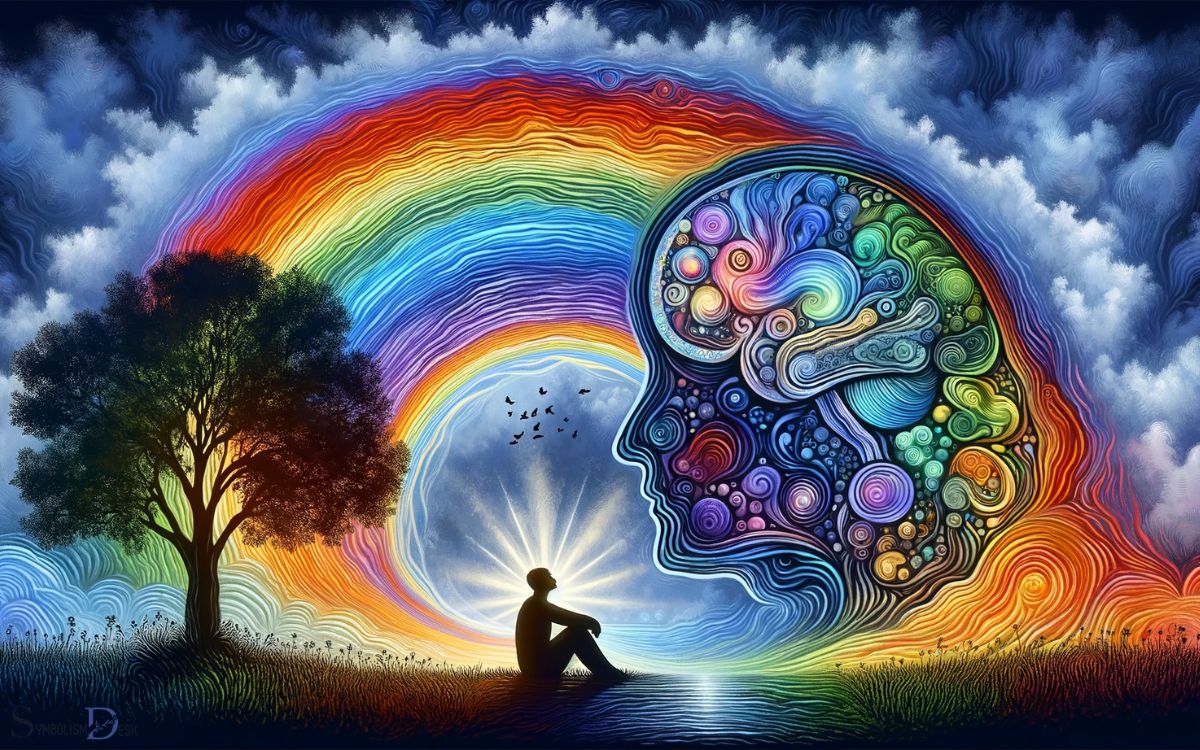
In many ancient mythologies, the rainbow is seen as a bridge connecting the mortal world to the divine realm. For instance, in Norse mythology, it’s believed to be a bridge between Midgard (the world of humans) and Asgard (the realm of the gods).
In other cultures, the rainbow represents hope, transformation, and new beginnings. For the Indigenous peoples of North America, the rainbow is a symbol of the great mystery and the interconnection of all living beings.
Additionally, in some Asian cultures, the rainbow is associated with good luck and fortune.
Understanding these various cultural interpretations provides insight into the rich tapestry of human beliefs and traditions surrounding this natural phenomenon.
Spiritual Significance Across Belief Systems
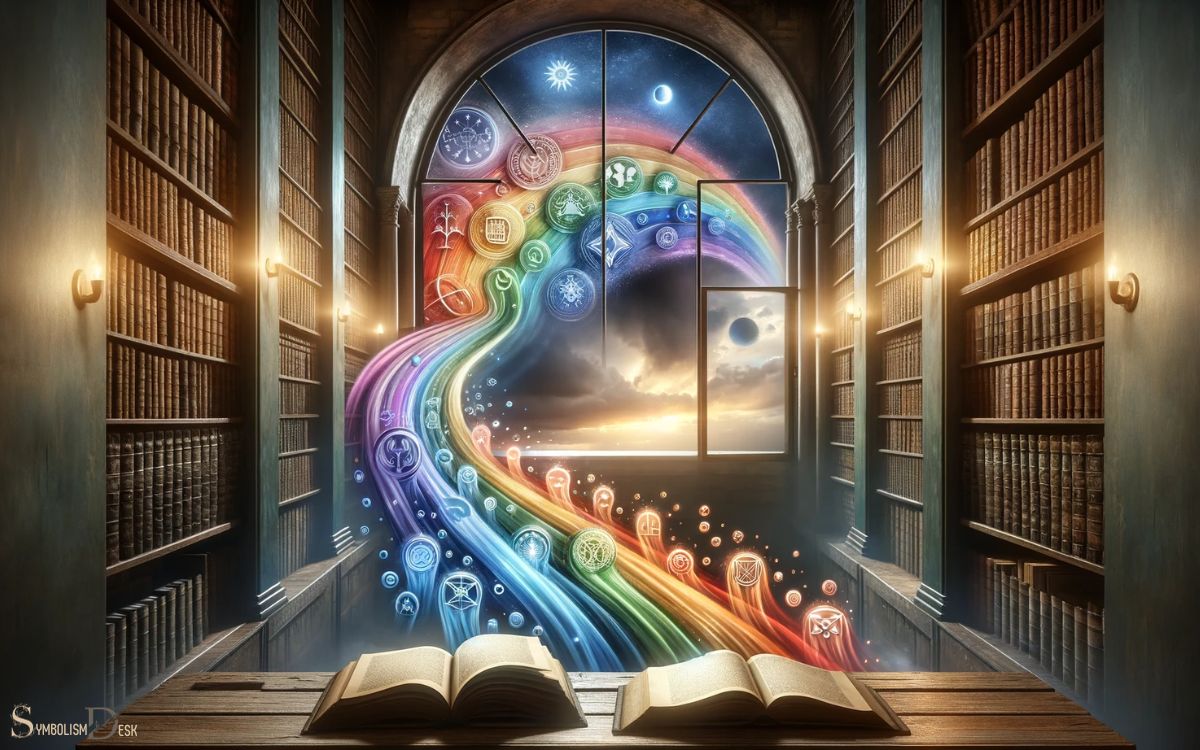
Rainbows hold spiritual significance across various belief systems. They represent hope, renewal, and connection to the divine. It’s a symbol that transcends cultural boundaries, uniting people in the shared understanding of its spiritual importance.
Exploring the universal spiritual significance of rainbows reveals the common threads that weave through diverse belief systems.
Cross-Cultural Rainbow Symbolism
Across various belief systems, the rainbow holds significant spiritual symbolism that transcends cultural boundaries. In many cultures, the rainbow represents a bridge between the earthly and spiritual realms, symbolizing a connection between humanity and the divine.
Below is a table summarizing the spiritual significance of the rainbow in various belief systems:
| Belief System | Spiritual Symbolism |
|---|---|
| Christianity | Symbol of God’s promise and hope for the future |
| Hinduism | Representation of the archer’s bow of the god Indra |
| Native American | Sign of the Creator’s forgiveness and the balance of nature |
| Norse Mythology | Bridge between the realm of the gods and the realm of humans |
| Buddhism | Reflects the unified and harmonious nature of existence |
These interpretations of the rainbow showcase its universal significance as a symbol of hope, connection, and spirituality across diverse cultural and religious traditions.
Universal Spiritual Significance
The spiritual significance of the rainbow varies across belief systems, reflecting a universal symbolism of hope and connection between humanity and the divine.
In Christianity, the rainbow is seen as a covenant from God, a symbol of promise and hope after the flood.
In Hinduism, the rainbow represents the bridge between the material and the spiritual worlds.
Native American cultures view the rainbow as a divine sign of healing, transformation, and balance.
In Buddhism, it symbolizes the interdependence of all things and the path to enlightenment.
Within each belief system, the rainbow signifies a connection between the earthly and the divine, offering hope, renewal, and a reminder of the spiritual dimension of existence.
This universal spiritual significance underscores the shared human longing for guidance, assurance, and transcendence.
Bridge Between Earthly and Divine
Rainbows have long been seen as a symbol of the connection between the earthly and the divine. Many cultures and belief systems view rainbows as a spiritual connection symbol, representing a bridge between the physical world and the realm of the divine.
Additionally, the appearance of a rainbow after a storm is often interpreted as a divine promise of hope and renewal.
Spiritual Connection Symbol
Symbolizing the bridge between the earthly and the divine, rainbows evoke a spiritual connection that transcends the physical world. They’re seen as a spiritual symbol due to their ability to connect the terrestrial and celestial realms, embodying a sense of unity and harmony.
In various spiritual traditions, rainbows are believed to carry profound meaning, serving as a reminder of the interconnectedness between humanity and the divine.
- Universal Symbol: Across different cultures and religions, rainbows are recognized as a symbol of spiritual significance, representing a connection to higher powers.
- Divine Communication: Many view rainbows as a form of divine communication, conveying messages of hope, peace, and blessings from the spiritual realm.
- Pathway to Enlightenment: In spiritual teachings, rainbows are often regarded as a pathway to enlightenment, guiding individuals towards spiritual growth and understanding.
Divine Promise After Rain
A rainbow serves as a visible covenant between the earthly and the divine, symbolizing the promise of hope and renewal after the rain. This natural phenomenon has been revered across cultures as a symbol of divine promise, a bridge between the temporal and the spiritual realms.
It represents the idea that after a period of darkness and adversity, there is hope for a brighter future. The rainbow’s appearance after a storm is a powerful reminder that even after the most challenging times, there is the potential for beauty and growth.
This symbolic meaning of the rainbow as a promise of divine renewal is deeply ingrained in human consciousness and continues to inspire hope and resilience.
| Symbol | Representation |
|---|---|
| Covenant | Promise of divine protection |
| Bridge | Connection between earthly and spiritual |
| Renewal | Hope and regeneration |
As a symbol of promise and renewal, the rainbow embodies the enduring hope for a better tomorrow, even in the face of adversity.
Symbol of Promise and Renewal
The rainbow’s appearance signifies promise and renewal, reminding people of hope and new beginnings.
It serves as a powerful symbol in various cultures, representing the following:
- Hope: The rainbow is a reminder that after a storm, there’s always a new beginning, bringing hope for better days ahead.
- Renewal: Its vibrant colors and ethereal beauty symbolize the renewal of life, encouraging individuals to embrace change and growth.
- Positivity: The rainbow’s presence after rainfall uplifts spirits and fosters a positive outlook, signifying that challenges are temporary and brighter times lie ahead.
The rainbow’s symbolism of promise and renewal holds deep meaning, resonating with individuals seeking solace and inspiration.
This concept seamlessly transitions into the subsequent section about the representation of diversity and unity, further highlighting the multifaceted significance of this natural marvel.
Representation of Diversity and Unity
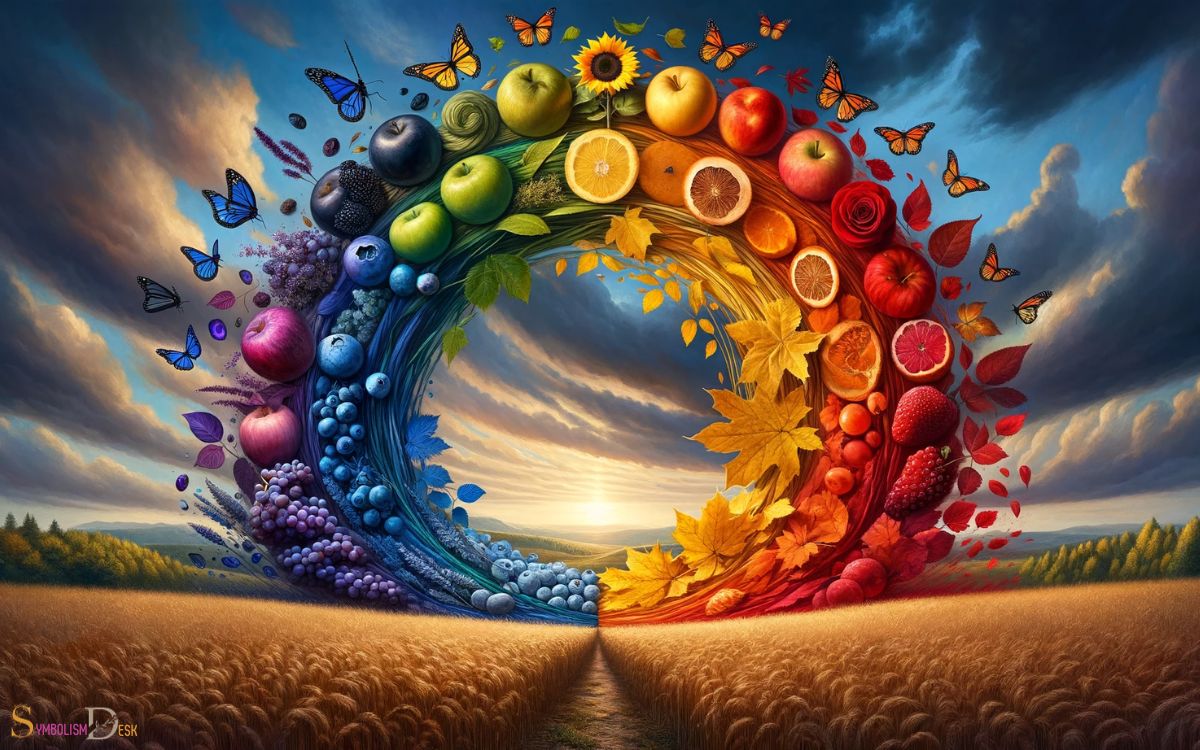
After symbolizing hope and renewal, the rainbow also serves as a representation of diversity and unity, emphasizing the interconnectedness of different elements in nature and society.
The vibrant display of colors in a rainbow reflects the beauty of diversity, where each individual hue is essential to the overall spectrum. It symbolizes the idea that differences in race, ethnicity, sexuality, gender, and beliefs should be celebrated and embraced.
The following table illustrates the diverse elements and their interconnectedness represented by the rainbow:
| Elements | Representation |
|---|---|
| Colors | Diversity |
| Light | Unity |
| Rain and Sun | Interconnectedness |
| Nature | Society |
The rainbow’s representation of diversity and unity is a powerful reminder of the value of inclusivity and the harmonious coexistence of different elements. It fosters a sense of unity and interconnectedness among all.
Transitioning into the subsequent section about ‘mythological and folklore associations’, the rainbow’s significance expands further.
Mythological and Folklore Associations
In mythologies and folklore from around the world, rainbows are often depicted as celestial bridges connecting the mortal realm to the divine.
In many cultures, the rainbow is seen as a pathway used by deities or spiritual beings to travel between the heavens and the earth.
Some of the mythological and folklore associations of rainbows include:
- In Norse mythology, it’s believed that a rainbow called Bifröst connects the realm of the gods to the realm of mortals.
- According to Greek mythology, the rainbow was a path created by the messenger goddess Iris, who traveled along it to deliver messages from the gods to humans.
- In some Native American folklore, the rainbow is seen as a symbol of hope and renewal, often associated with positive transformation and good fortune.
How Does the Color Yellow Contribute to the Symbolic Meaning of a Rainbow as a Symbol of Hope?
The symbolic meaning of yellow in a rainbow represents hope, positivity, and joy. Yellow is often associated with sunshine and happiness, making it a fitting addition to the vibrant spectrum of colors. Its presence in the rainbow symbolizes optimism and a brighter future, contributing to the overall symbolism of hope.
Psychological and Emotional Impact
Research has shown that the sight of a rainbow can evoke feelings of joy and optimism in individuals, impacting their psychological and emotional well-being.
The vibrant and diverse colors of a rainbow can elicit a sense of wonder and awe, leading to an uplifted mood and a positive outlook on life.
Psychologically, the experience of witnessing a rainbow can prompt feelings of hope and renewal, serving as a powerful symbol of positivity and resilience.
Emotionally, it has been observed to create a sense of connection to nature and the universe, fostering a feeling of peace and harmony within individuals.
This phenomenon highlights the profound impact that natural phenomena like rainbows can have on human emotions and mental well-being, serving as a source of inspiration and comfort.
Conclusion
The symbolic meaning of a rainbow is a timeless and universal representation of hope, diversity, and spiritual connection. In many cultures, the colors of the rainbow also hold specific symbolism. For example, the yellow color symbolism in a rainbow represents brightness, positivity, and energy. This vibrant color is often associated with joy and optimism, adding an extra layer of meaning to the already powerful symbol of the rainbow. The rainbow’s array of colors reflects the diversity of life and the interconnectedness of all beings, making it a powerful emblem of unity and understanding. Similarly, exploring specific symbols, such as the black cat symbolic meaning, can deepen our appreciation of cultural beliefs and universal archetypes. While rainbows radiate light and energy, symbols like the black cat remind us of the mystique and dualities within nature and human perception.
Across cultures and belief systems, it serves as a bridge between the earthly and divine realms, symbolizing promise, renewal, and unity.
Its mythological and folklore associations, as well as its psychological and emotional impact, make the rainbow a powerful and enduring symbol of beauty and resilience in the face of adversity.





